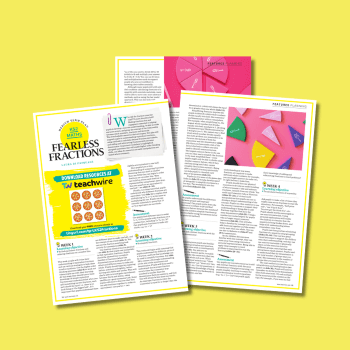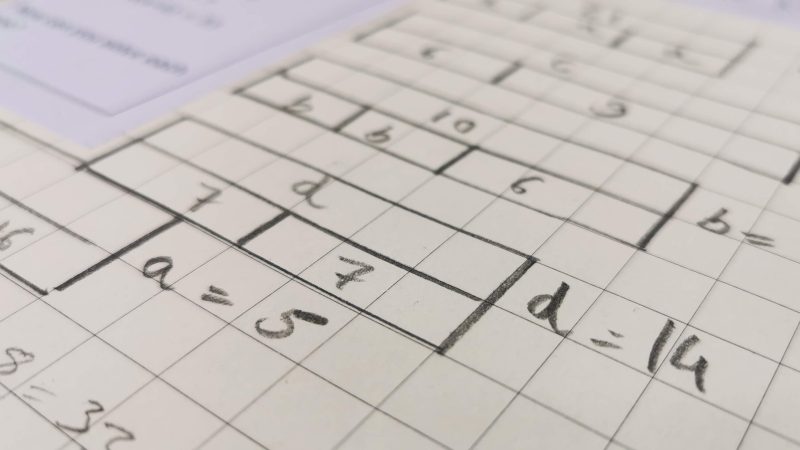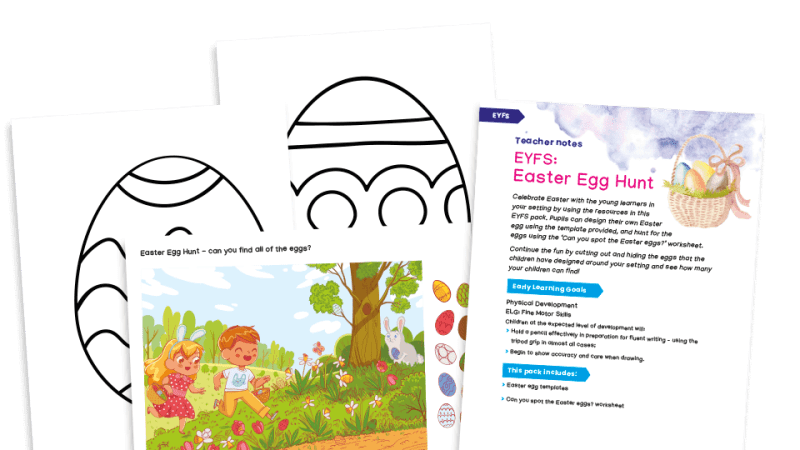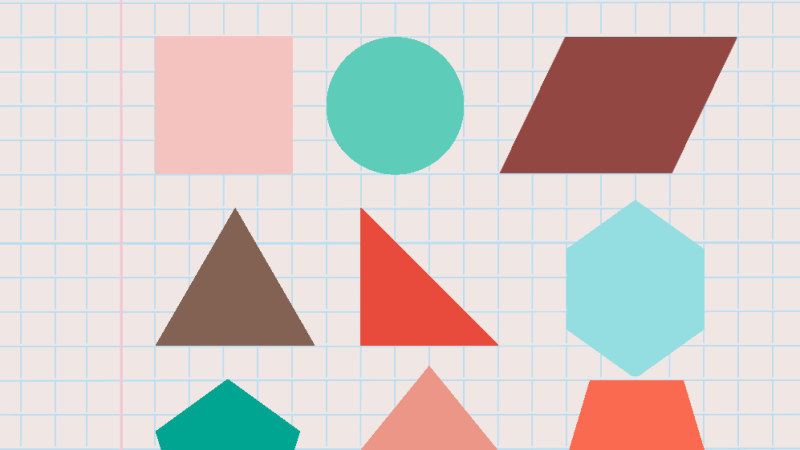Primary resources maths – The best worksheets and resources for KS1, KS2 and SATs practice

Cover the primary curriculum with our choice of the top maths resources for children in KS1 and KS2

- by Teachwire

Jump to a section…
KS1 maths
The focus of primary maths teaching in KS1, according to the maths curriculum, is to ensure that children develop mental fluency and confidence with whole numbers, counting and place value.
This involves using practical primary maths resources to work with numerals, words and the four operations.
By the end of Y2, primary school pupils should know number bonds to 20 and understand place value.
This collection of Year 1 worksheets has been designed to cover the entire White Rose scheme of work, making mathematics planning a doddle.
When do children start learning about capacity and volume?
In Y1 pupils should start using a range of measures to describe and compare mass, length, capacity/volume, money and time.
Number and place value
In KS1, primary school pupils need to learn to count to 100. They should also be able to read and write numbers to 100 in numerals and words and count in multiples of twos, fives and tens.
Given a number, they should be able to identify one more and one less, as well as being able to identify and represent numbers using objects and pictorial representations.
Pupils should be taught to count in steps of 2, 3, and 5 from 0, and in tens from any number, forward or backward. They should recognise the place value of each digit in a two-digit number and be able to identify, represent and estimate numbers using different representations.
Children also need to be able to compare and order numbers from 0 up to 100 and use ‘greater than’, ‘less than’ and ‘=’ signs. They should be able to use place value and number facts to solve problems.
A common misconception children make when learning about place value is thinking, for example, that 3.27 is a larger number than 3.8 because ‘27’ is larger than ‘8’. Watch a video about how to address issues like this here.
Find more number and place value worksheets and primary resources for KS1 maths here.
Addition and subtraction
In KS1 this involves pupils reading, writing and interpreting mathematical statements involving addition (+), subtraction (-) and equals (=) signs.
They should also be able to subtract one-digit and two-digit numbers fluently to 20 and solve simple addition, subtraction and missing number problems.
This four-page illustrated PDF contains 12 maths problems designed to help a student practice their knowledge of different number bonds up to 10.
Multiplication and division
If a mastery approach to times tables sounds appealing, these printable worksheets take pupils through the two, five and ten times tables, as well as all the other tables up to 12.
The multiplication worksheets start with pictorial examples then move on to the abstract, while supporting children’s understanding of the relationship between different times tables.
Fractions
KS1 pupils need to learn to recognise a half, quarter, third and three quarters and begin to write simple fractions.
If you want a hands-on approach to teaching fractions, use this fun pirate-themed primary teaching resource to teach volume and fractions.
Measurement
In KS1 pupils should learn to compare, describe and measure length and height, mass and weight, capacity/volume, time, temperature and the different denominations of coins and notes.
They should be able to sequence events in chronological order and talk about days of the week, weeks, months and years, as well as being able to tell the time to five minutes.
Giving pupils the experience of practically working with measures can make a huge difference to their levels of understanding. Try this KS1 measuring and capacity lesson plan based on George’s Marvellous Medicine.
Properties of shapes
By the end of KS1, children can usually identify and describe the properties of 2D shapes and 3D shapes. Boost your pupils’ shape recognition skills with these activity ideas.
KS2 maths
So that’s KS1 maths covered, but what maths subjects will KS2 children learn, and what are the best primary resources to help?
The focus in LKS2 maths is on ensuring that pupils are fluent with whole numbers and the four operations.
What about mental maths?
KS2 pupils use both written and mental methods and perform calculations with increasingly large whole numbers.
By the end of Y6, children should have extended their understanding of the number system and place value to include larger integers. They should be able to solve a wider range of problems, using both written and mental methods.
What maths subjects will KS2 children learn? Read on to find out more.
Number and place value
By Y4 pupils should be able to count in multiples of 6, 7, 9, 25 and 1000, find 1000 more or less than a given number, count backwards (including negative numbers) and recognise the place value of each digit in a four-digit number. Try this negative numbers worksheet.
Alongside this they should be able to order and compare numbers beyond 1000, identify, represent and estimate numbers using different representations, round up numbers and know Roman numerals to 100. These decimals worksheets and primary resources for KS2 maths will come in handy.
By UKS2, pupils are also expected to be able to work with numbers up to at least one million, count in steps of powers of 10, interpret negative numbers, count with positive and negative whole numbers and read Roman numerals up to 1,000.
Addition, subtraction, multiplication and division
This steps up in LKS2 to involve adding and subtracting numbers mentally and adding and subtracting numbers using formal written methods. This mental addition and subtraction plan involves adding pairs of two-digit and three-number numbers.
Pupils should also be able to recall multiplication and division facts for multiplication tables up to 12×12, multiply and divide mentally and use factor pairs and commutativity in mental calculations.
They should also be able to multiply two-digit and three-digit numbers by a one-digit number.
By the end of primary, children can multiply and divide four-digit by two-digit whole numbers and identify common factors, common multiples and prime numbers.
Fractions, decimals and percentages
LKS2 pupils should be able count up and down in tenths and hundredths. They should be able to write fractions of a discrete set of objects and use fractions as numbers.
Children should be able use diagrams to show equivalent fractions, begin to add and subtract fractions and compare and order fractions. Decimals come into play in Y4, with children expected to be able to solve measure and money problems involving decimals and fractions.
UKS2 pupils will be able to compare and order fractions, visually represent equivalent fractions and recognise mixed numbers and improper fractions.
They should be able to add, subtract and multiply fractions and write decimal numbers as fractions. Children will also learn the per cent symbol.
By Y6, children will be simplifying fractions, dividing them and multiplying and dividing decimal numbers. Test Y6 pupils’ equivalent fraction skills with these tarsia puzzle fractions worksheets.
Find a selection of the best printable KS2 maths worksheets for teaching fractions here.
Measurement
LKS2 pupils will learn to measure, compare, add and subtract lengths, mass and volume/capacity and convert between different units of measure. The curriculum covers perimeters of 2D shapes, money and change, telling the time and roman numerals.
Older pupils will investigate the area of squares and rectangles and estimate volume and capacity.
Find a selection of excellent free worksheets and primary resources here.
Ratio and proportion
In Y6, pupils should learn to find missing values by using integer multiplication and division facts. They should be able to calculate and compare percentages and solve scale factor, unequal sharing and grouping problems. Use this ratio and proportion maths resource.
KS2 SATs
Because of Covid, the government has said that SATs will not take place in 2021, stating that they would be an “additional burden” on schools.
So, how are schools determining maths grades this year? Instead of formal exams, teachers will be using end-of-Key-Stage assessment frameworks to judge pupils’ maths skills.
Here’s how to use previous SATs questions to help pupils consider links and patterns between numbers.
Christmas activities
Are you a primary teacher looking for a maths activity to get children feeling festive?
Help pupils understand how size relates to quantity with this KS1 maths lesson plan that involves drawing giant snowmen.
Included in this KS2 classroom download are the nets for 12 festive 3D shapes.
This illustrated Christmas maths worksheet gives pupils the chance to enter the missing numbers in a series of Santa hat sums.
PS… Want to know the top five Christmas gifts for maths teachers? Check out the list here.
Maths games
Whether you’re planning to use them in the classroom or within an extracurricular maths club, maths games are a great way to help children learn.
Strategic, logical games like chess and card games can be a great starting point.
You may have learnt times tables by rote, but there are many other options to help cement these vital facts in children’s minds, including games like fast fingers and times table snap.
Boost primary pupils’ maths skills further with this range of free-to-play games aimed at KS2. There are football and bowling activities to try, plus games based on the TV shows Who Wants to be a Millionaire and Countdown.
Word problems
Succeeding at maths at school can be as much about words as numbers. Teacher John Bee suggests that stem sentences are a great way to support teaching and learning in maths and can be used to draw attention to essential mathematical concepts.
Asking questions and designing tasks that lead to and encourage mathematical reasoning is also important. Educator Robert Wilne explains that getting children to explain why they’ve decided on a particular answer, without you having to ask them first, is vital. Try to encourage pupils to verbally justify their observations.











